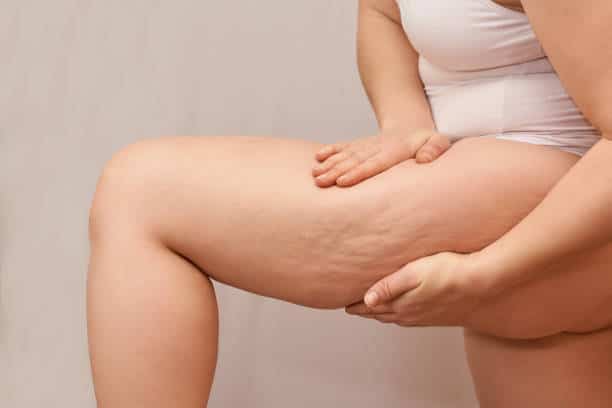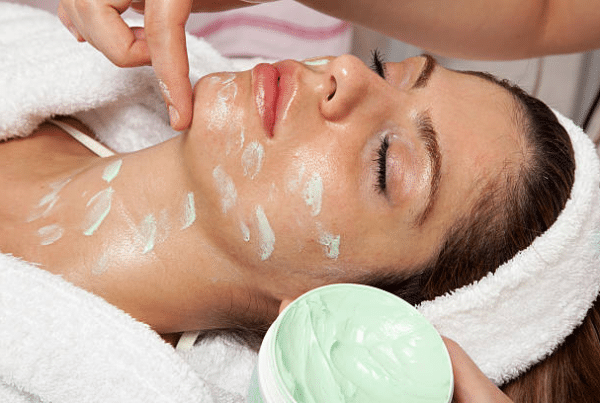Cellulite refers to fat deposits that push up on the connective tissue beneath your skin. It frequently develops on the thighs, stomach, and buttocks. Cellulite causes the skin’s surface to appear lumpy and puckered, or dimpled.
Fast facts about cellulite
- Cellulite is likely to affect between 80 and 90 percent of women.
- Because of its texture, cellulite is also known as orange-peel skin.
- There are numerous therapies available, however the effects are typically transient.
- A low-fat diet, smoking cessation, and an active lifestyle may all assist to decrease the occurrence of cellulite.
Who does it affect?
Cellulite affects men and women. However, women get cellulite at a much higher rate than men.
How common is this condition?
Cellulite is a frequent condition. Cellulite affects 80–90% of all women who have reached puberty. Ten percent or less of guys have cellulite.
The amount and visibility of cellulite on your body are determined by a number of factors, including age, sex, genetics, and the thickness of your skin. Your skin becomes less elastic as you get older, which can accentuate the appearance of cellulite. Moreover, gaining weight might accentuate the look of cellulite.
Even very slender people occasionally detect the appearance of cellulite, even though it is more noticeable in obese people.

Symptoms and Causes
What are the symptoms?
The appearance of cellulite is dimpling or lumpy skin. It could always be apparent or only become apparent when you pinch your skin. Your butt, thighs, and stomach are affected by cellulite.
There are four grades of cellulite:
- Grade 0: Your body is free of cellulite.
- Grade 1: You have smooth skin when you’re standing, but when you sit down, you have some slight dimpling.
- Grade 2: When you sit or stand up, your skin displays considerable dimples.
- Grade 3: When you sit or stand, your skin displays noticeable dimples. There are deep peaks and valleys (raised and depressed areas) in your skin as well.
Causes
It is unclear what exactly produces cellulite. The fat lies in between the fibrous connective cords that bind the skin to the underlying muscle. As fat cells build up, the long, strong cords pull down and the fat cells press up on the skin. This results in dimpling, or an uneven surface.
In addition, heredity determines body type, skin texture, and structure, and hormones have a significant impact in the development of cellulite. Even extremely fit persons can have cellulite; other factors that influence this include weight and muscle tone.
Is cellulite contagious?
Cellulite cannot be spread. Skin-to-skin contact is ineffective in the transmission of cellulite.
Management and Treatment
Is it possible to get rid of cellulite?
Cellulite affects individuals with all body types. It’s normal, but the way fat presses against your connective tissue gives the appearance of being puckered or dimpled. Although you can’t get rid of it entirely, you can make it look better.
How to get rid of cellulite?
A range of treatments are also employed by cosmetic surgeons to temporarily minimize the appearance of cellulite. Among these therapies are:
- Deep massaging to puff up the skin.
- Acoustic wave therapy to break up cellulite with sound waves.
- Laser treatment to help thicken the skin.
- Liposuction to remove fat. However, it’s deep fat, not necessarily cellulite.
- Mesotherapy, in which a needle injects drugs into the cellulite.
- Subcision, in which a needle inserted under the skin breaks up tough bands causing cellulite.
- Creams and lotions containing caffeine or 0.3% retinol.
- Spa treatments, which can temporarily make cellulite less noticeable.
- Vacuum-assisted precise tissue release to cut tissue and fill out dimpled skin.
- Radiofrequency, ultrasound, infrared light or radial pulses to heat skin.
Prevention
How can I reduce my risk?
You can’t do anything that guarantees you won’t get cellulite. But there are some steps you can take to help reduce your risk, including:
- Avoiding processed foods that are high in carbohydrates, fats, preservatives and salt.
- Taking supplements that contain caffeine, grape-seed extract or ginkgo biloba.
- Exercising regularly.
 5 6 1 . 8 1 0 . 0 5 5 5
5 6 1 . 8 1 0 . 0 5 5 5 








